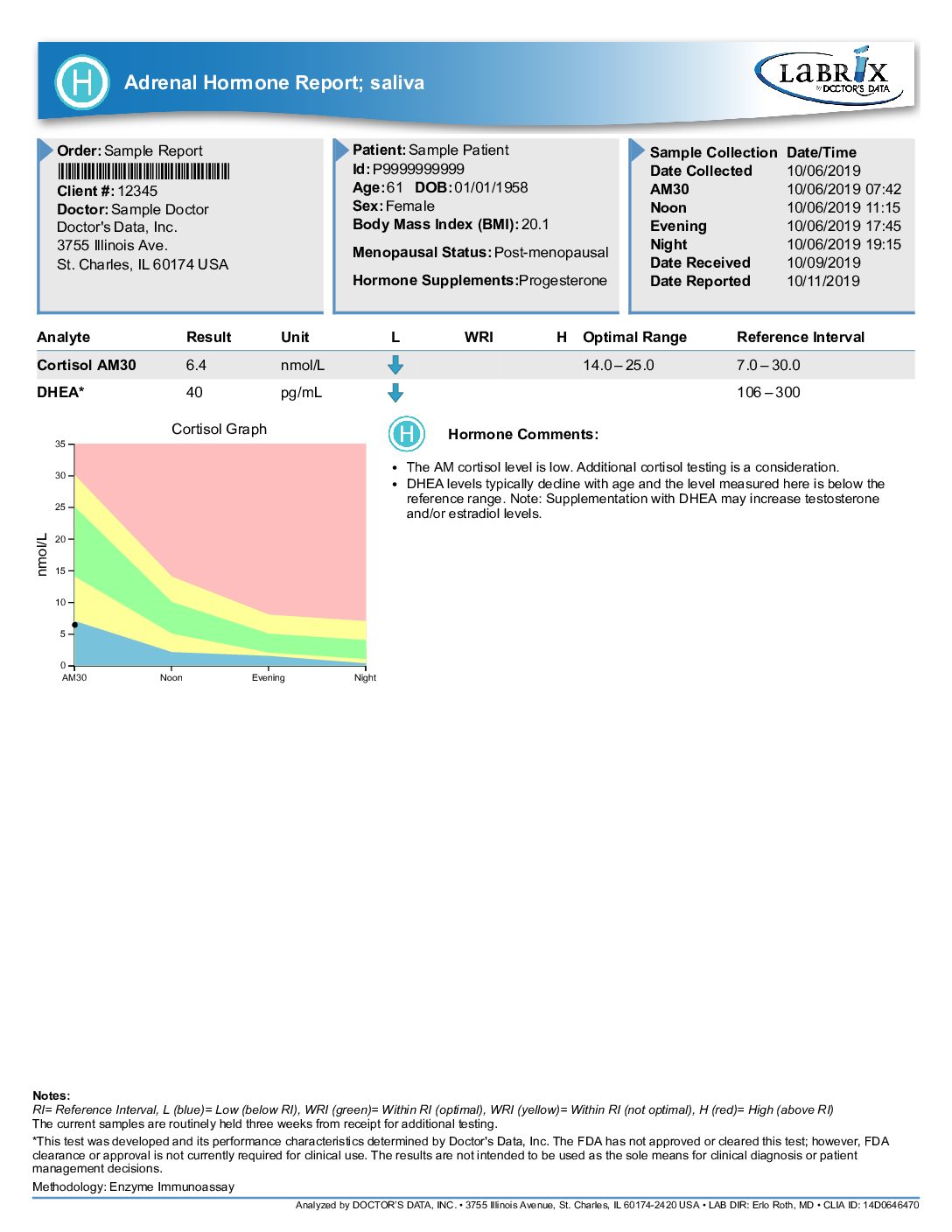Description
Sample: Saliva
Test Analytes: Estrogen, Progesterone, Testosterone, DHEA-S, Cortisol (x 1)
The Basic Hormone Profile provides a basic evaluation of the sex hormones and a brief glimpse at adrenal function with the AM cortisol level. This profile is useful when retesting patients who have begun hormone therapy, but we encourage use of the Comprehensive Profile for initial evaluation. This is the minimal test recommended for symptoms that include:
Men Experiencing:
- Decreased libido
- Erectile dysfunction
- Loss of stamina
- Decrease in mental sharpness
- Reduced muscle size
- Tearful episodes or increased moodiness
- Metabolic syndrome
- Prostate enlargement or cancer
- Hot flashes
- Irritability
Women Experiencing:
- Hot flashes
- Anxiety/Depression
- Night sweats
- Breast tenderness
- Irritability
- Forgetfulness
- Irregular menstrual cycles
- Vaginal dryness
- Urinary incontinence
- Uterine fibroids
- Increased facial / body hair
- Acne
The Basic Hormone Profile reports hormone levels, and also calculates the Pg/E2 ratio, which assesses the relationship between estradiol, which can drive cellular proliferation, and progesterone, which mitigates that growth and potentiates cellular differentiation.
Hormones are powerful molecules essential for maintaining physical and mental health. We frequently think of estrogen as being a female hormone, and testosterone as being a male hormone. But men AND women make both, plus several more that need to be in balance for optimum health. An imbalance of any one hormone can throw your physical and mental health out of balance, causing aggravating and even serious health problems.
One size does not fit all when it comes to hormones. For decades western medicine has prescribed hormone replacement therapy as if everyone needed the same thing and the same amount. Nothing could be further from the truth. Your hormones are like your fingerprints and in order to achieve optimal health, you need to know what your specific imbalances are. Female and male hormone tests can help identify these imbalances.
There are several ways to test for hormones (saliva, serum and urine). Saliva is the best method to test the active/bioavailable portion of hormones, which are reflective of tissue levels. If your patient is seeking bio-identical hormone replacement (BHRT), you’ll need to know active hormone levels. In addition, if using a topical (transdermal) hormone preparation for treatment, saliva testing is the most accurate tool to measure and monitor hormone status.




